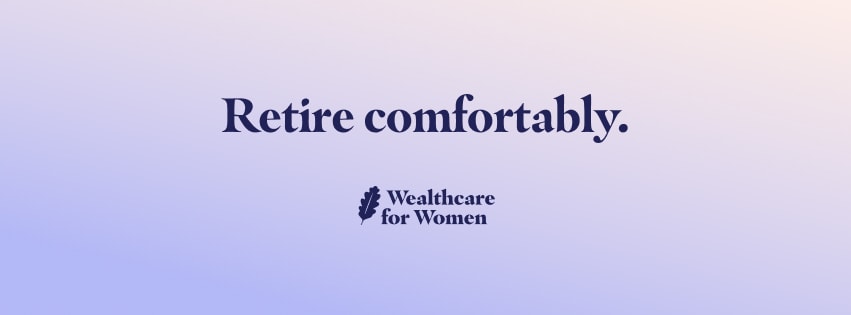
The amount of money you’d take home if you retired today depends on your vested balance. But what exactly does this mean? And what are the implications?
According to Business Insider, the average US worker’s 401(k) balance currently exceeds $112,500. But did you know a proportion of your retirement savings might not legally belong to you yet?
Your nest egg’s actual value depends on what’s called your vested balance. Put simply, this is the money in your retirement account that you own. Although it’s natural to assume every cent is yours to withdraw, that’s not necessarily the case. Read on to learn more about what it means to be vested and how it can impact your career and financial decisions.
What Is Your Vested Balance?
Your vested balance is the amount of money in your retirement account that belongs to you. In an ideal world, you’d be 100% vested, which means you own it all. Your contributions to your 401(k) or other savings vehicle automatically fall in this category.
Yet, let’s say your employer matches them. This is when they pay a set amount into your retirement account based on how much you contribute. Imagine they offer a dollar-for-dollar match up to 4% of your salary. If you earn $100,000 a year, 4% would be $4,000. If you paid that much money into your 401(k), then they’d do the same.
However, whatever they contribute only becomes yours once it vests. Until then, it technically falls under your “unvested balance.” Vesting is the process of that money shifting ownership to you, which happens at the end of the vesting period. At that point, every dime would stay in your account if you left your job and began working for a new company.

What’s a Vesting Schedule?
Your employer’s contributions only become yours to keep after a specified length of time. The nuts and bolts of this vesting schedule vary, though.
In some plans, matched contributions vest instantly, meaning it hits your vested balance as soon as the money enters the account. Others follow either a cliff or graded vesting schedule*:
Graded Vesting
In graded vesting, a set percentage of employer contributions vests in every passing year of employment. In the first year, you might have nothing in your vested balance. In year two, 20% gets vested. In year three, it could jump to 40%, and so on. If you left that role after three years, you’d take home 40% of the employer’s contributions.
Essentially, with this type of vesting schedule, you own the money bit by bit. For a 401(k), the longest you’d ever have to wait before becoming 100% vested this way is six years.
Cliff Vesting
With cliff vesting, it’s all or nothing. Every cent your employer contributes vests after a set amount of time. For instance, you might be completely unvested for the first two years of employment. Then, upon hitting that two-year milestone, all that money hits your vested balance.
The time limit for becoming fully vested with a cliff vesting schedule is three years. However, depending on your plan, you may only have to wait one.
*For both cliff and graded vesting, all future employer matches usually vest immediately once the time limit has elapsed and you’re 100% vested.
Important: It’s worth clarifying how your employer defines a “year” of service. In general, it’ll be a calendar year in which you work at least 1,000 hours. In other cases, it could simply be a 12-month period. Finding this out should help you avoid nasty surprises down the road.
Why Is Knowing Your Vested Balance Important?
The biggest reason to know about your vested balance is that you won’t receive any unvested funds if you leave the job or get fired.
Let’s say your plan follows a cliff vesting schedule that vests after three years. Imagine quitting after two years and 11 months because you didn’t know any better! You’d forfeit every matched contribution the employer had made in that time.
Ultimately, knowing your vested balance helps you make informed career and financial decisions. You might realize it makes no sense to quit right now or that you can’t afford to retire because a big chunk of your savings hinges on future work. Equally, quitting could feel like the best way forward because it’ll take years to receive the contributions.
Check your 401(k) plan’s summary description or annual benefits statement to learn more about your vested balance. Failing that, speak to your plan administrator or someone in human resources. They should know the rules and details, including where you are in the vesting schedule.
Factors Affecting Your Vested Balance
While that schedule is the primary factor determining how vested you are, other events come into play. For example, with 401(k) plans, you become 100% vested as soon as you reach normal retirement age. FYI, this varies from 66 years and two months to 67 years old, depending on your date of birth. You can find more information on the topic here.
You’d also become fully vested if your employer terminates your retirement plan (either fully or partially). While it isn’t obligatory, this can happen in the event of your death or disability, as well.
And let’s say your employer sponsors a Simplified Employee Pension Plan (SEP), SIMPLE IRA, or other IRA-based plan instead of a 401(k). For these, all contributions would automatically be 100% vested.
Pros and Cons of Vesting
Vesting has benefits and drawbacks. On the positive side for employers, it encourages workers to stay with the company for longer because they know they’ll eventually receive what’s being paid into their retirement accounts.
For employees, the promise of getting that extra money encourages them to start saving in the first place. On the flip side, it can be restricting. Imagine if a fantastic job opportunity came up toward the end of your vesting schedule or if you started to despise the role. It’d be natural to feel stuck in the position until you became fully vested.
About the Author
Danny Newman is a nationally syndicated freelance writer with a focus on travel. MSN feed and Associated Press bylines. Danny is a digital nomad from the UK who’s been traveling full-time since 2018. Learn More About Danny.
Find Your Next Financial Advisor on Wealthtender
📍 Click on a pin in the map view below for a preview of financial advisors who can help you reach your money goals with a personalized plan. Or choose the grid view to search our directory of financial advisors with additional filtering options.
📍Double-click or pinch pins to view more.

























